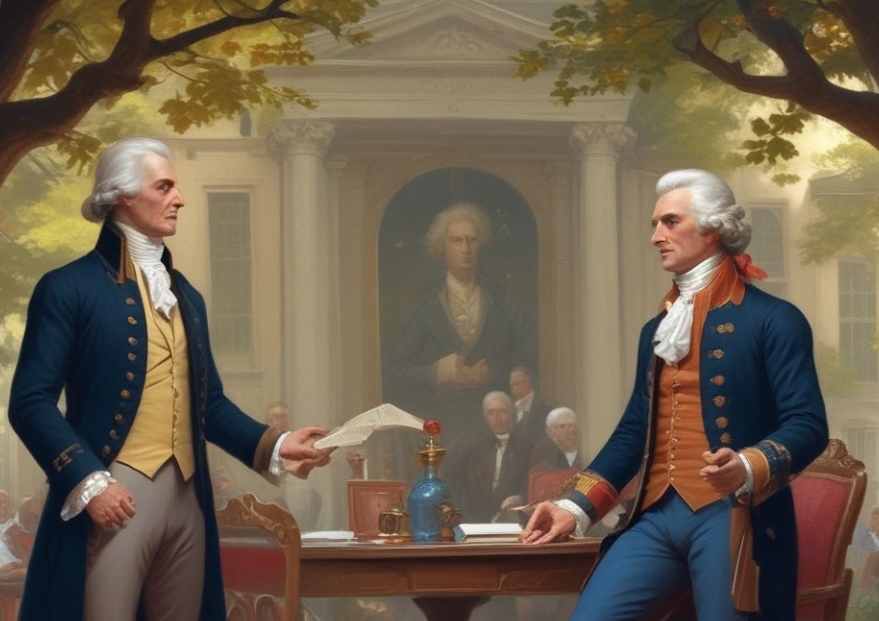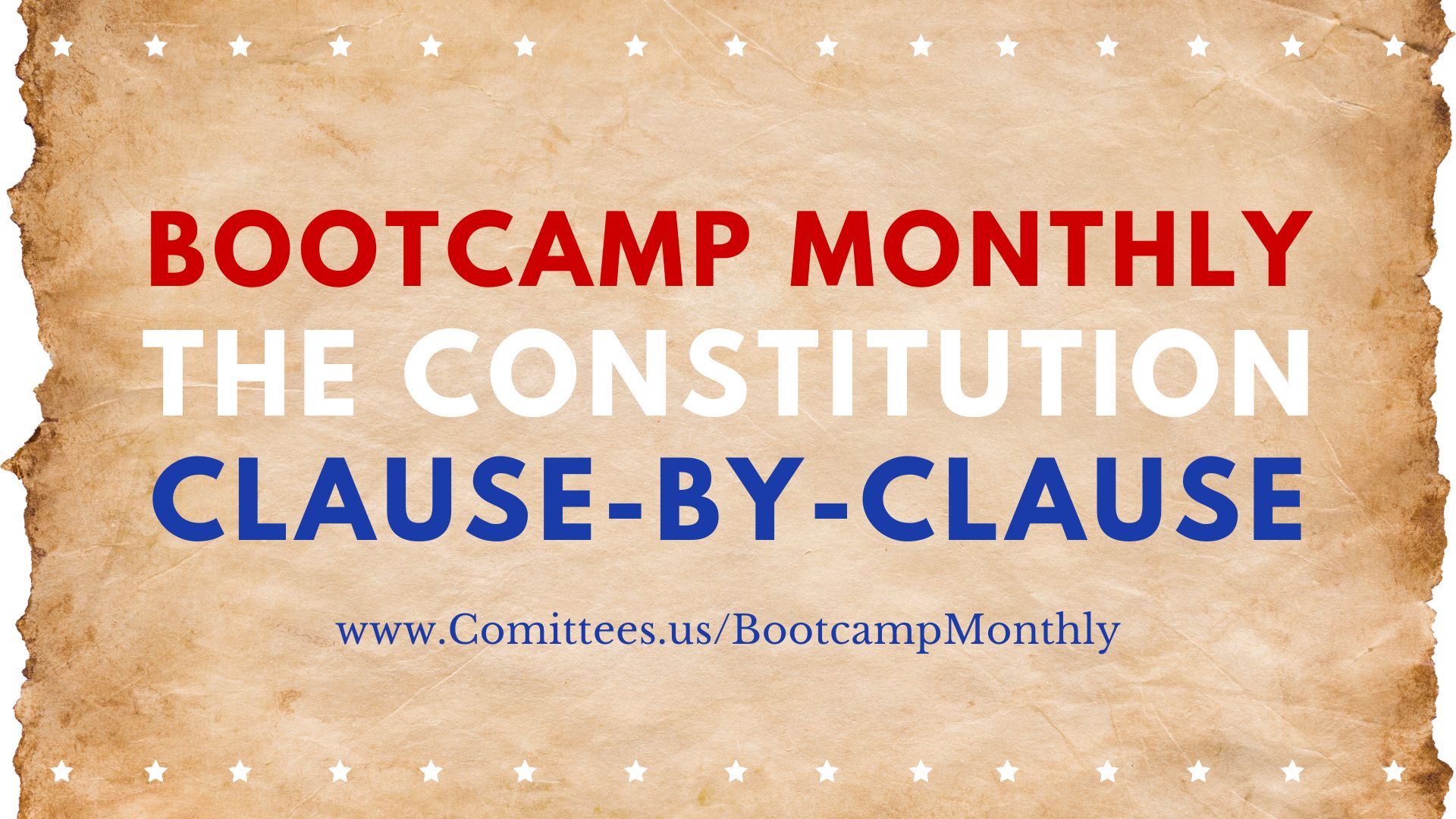The Hamiltonians and Jeffersonians were two early political factions in the United States that emerged during the late 18th century, fundamentally disagreeing on the role of the federal government and the balance of power between the federal government and the states. These factions represented the views of two key Founding Fathers: Alexander Hamilton and Thomas Jefferson, whose conflicting visions shaped early American politics.
Hamiltonians (Federalists)
Led by: Alexander Hamilton
Key Beliefs:
- Strong Central Government: Hamiltonians advocated for a robust federal government with significant powers over the states. They believed that a strong national government was necessary to ensure stability, economic growth, and the nation’s security.
- Economic Vision: They supported a diversified economy based on industrialization, manufacturing, and commerce. Hamiltonians believed that the federal government should play an active role in shaping the economy, promoting infrastructure projects, establishing a national bank, and managing the country’s financial system.
- Loose Interpretation of the Constitution: Hamiltonians favored a loose interpretation of the Constitution, meaning they believed in implied powers for the federal government. They argued that the Constitution should be interpreted in ways that allowed the government to act in the nation’s best interest, even if not explicitly stated in the text (e.g., establishing the First Bank of the United States).
- Elitism and Governance by the Educated: Hamiltonians were more inclined to trust governance to the elite, educated class, believing that a knowledgeable ruling class would make more effective decisions for the country. They feared the potential instability of too much direct democracy.
- Foreign Relations: They favored close ties with Great Britain, the major trading partner at the time, and wanted to maintain strong economic relationships with Europe’s leading powers.
Jeffersonians (Democratic-Republicans)
Led by: Thomas Jefferson and James Madison
Key Beliefs:
- States’ Rights and Limited Federal Power: Jeffersonians emphasized states’ rights and were wary of an overly powerful federal government. They believed that a strong central government could lead to tyranny and threaten individual freedoms. Instead, they advocated for more local control and decentralized power.
- Agrarian Economy: Jeffersonians envisioned the United States as a nation of independent farmers and landowners. They believed that the strength of the country lay in its agrarian base, and they were suspicious of industrialization and urbanization, which they associated with corruption and class division.
- Strict Interpretation of the Constitution: Jeffersonians championed a strict interpretation of the Constitution, insisting that the federal government should only have the powers explicitly granted to it by the Constitution. They opposed Hamilton’s vision of implied powers, arguing that such a view could open the door to excessive government control.
- Faith in the Common Man: Jeffersonians had greater trust in the common people and believed in widespread democratic participation. They thought that the general populace, particularly small farmers and laborers, should have more say in government decisions.
- Foreign Relations: They were more sympathetic to France, particularly after the French Revolution, which they viewed as a continuation of the struggle for liberty. Jeffersonians were wary of close ties with Britain, fearing that such an alliance would undermine American independence and favor elitist interests.
Major Conflicts Between the Hamiltonians and Jeffersonians:
- The National Bank: One of the central disputes was over Hamilton’s proposal to create the First Bank of the United States. Hamilton argued that a national bank was necessary for managing the country’s finances, promoting commerce, and providing loans for businesses. Jeffersonians, however, believed that the bank was unconstitutional and concentrated too much power in the hands of the federal government and wealthy interests.
- Federal vs. State Power: Hamiltonians wanted a more powerful federal government to regulate commerce, raise taxes, and ensure national security. Jeffersonians feared that this would lead to the erosion of states’ sovereignty and individual liberties.
- Economic Policy: Hamiltonians supported tariffs, government subsidies for industry, and a focus on creating a strong, industrial economy. Jeffersonians favored a more laissez-faire approach to the economy and wanted to protect agriculture from the influence of northern financial and industrial interests.
- Foreign Policy: During the French Revolution and the subsequent wars between Britain and France, the Hamiltonians favored neutrality but leaned toward Britain for economic reasons, while Jeffersonians supported France, seeing its revolution as part of a global struggle for liberty.
The Evolution of the Two Factions:
- Over time, these two factions evolved into formal political parties. The Federalists (Hamiltonians) and the Democratic-Republicans (Jeffersonians) became the first political parties in the United States. The Federalists gradually lost influence after the War of 1812 and the Era of Good Feelings, leaving the Democratic-Republicans dominant for a time.
- Eventually, the Democratic-Republican Party itself split, with factions forming the Jacksonian Democrats (a continuation of Jeffersonian ideas) and the Whigs, who adopted some elements of Hamiltonian thought. The Federalists’ ideals of a strong federal government and economic modernization would later influence the formation of the Republican Party in the mid-19th century.
Summary:
The Hamiltonians (Federalists) favored a strong central government, industrial growth, and a loose interpretation of the Constitution, while the Jeffersonians (Democratic-Republicans) supported states’ rights, an agrarian economy, and a strict interpretation of the Constitution. These two factions set the foundation for the enduring debate between federal versus local control in American politics, a debate that continues to resonate in modern discussions of government power and individual liberty.







